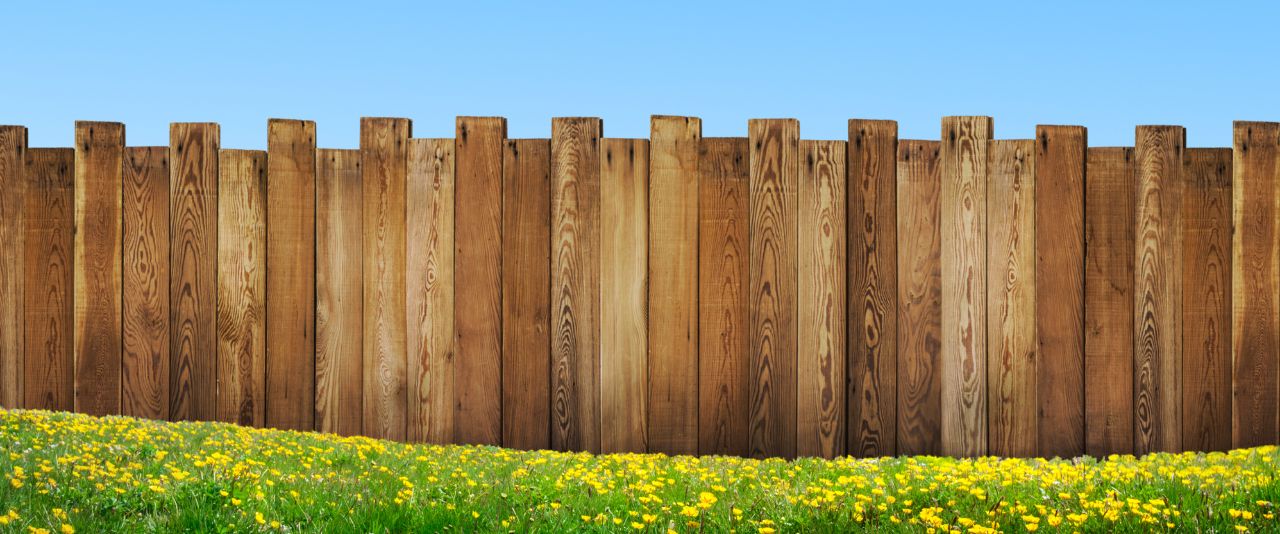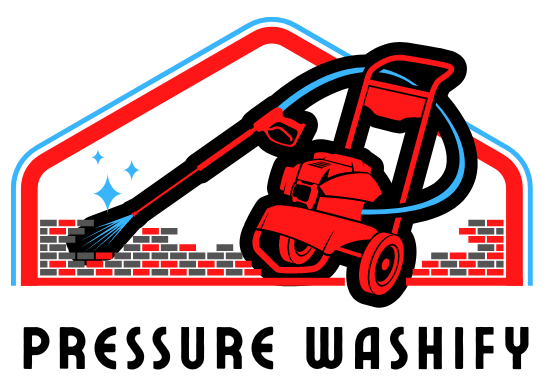Affiliate Disclaimer: This post may contain affiliate links, meaning we get a commission if you decide to make a purchase through our links, at no extra cost to you.
There’s a certain charm about a tidy, well-maintained wood fence—its timeless aesthetics whisper tales of cherished moments, fenced family gardens, and cozy household boundaries. But as time marches by, the effect of weather and environmental elements starts to challenge this charm. Wood fences accumulate grime, mold, and mildew, leading them to lose their original allure.
Traditionally, cleaning your wood fence would entail using a pressure washer—a piece of equipment that clears away built-up dirt with jet-speed water sprays. But sometimes using a pressure washer is not convenient or maybe you don’t want to damage your wooden fence with high-pressure water.
In this blog post, we will discuss various methods on how to clean a wooden fence without pressure washing.

Water and Soap Method: A Classic, Gentle Approach
It may seem like a straightforward solution, but water and soap indeed work wonders when it comes to cleaning a wooden fence. The combination effectively tackles built-up dirt, grime, and plant residue—all without causing harm to your fence or the environment!
Here’s a step-by-step guide to cleaning your wood fence with water and soap:
1. Prepare a soapy solution: Fill a bucket with warm water and add a good-quality, mild soap that’s biodegradable. Dish soap, laundry soap, and eco-friendly wood cleaning products are all suitable choices. Mix the solution until soap suds form.
2. Soak your fence: To start, wet the fence by gently spraying water onto its surface. You can use a garden hose with a sprayer attachment, maintaining gentle pressure to avoid any damage. Wetting the fence beforehand helps loosen the dirt and grime.

3. Scrub the fence: Submerge a soft-bristled brush or a sponge in your sudsy solution, and scrub the fence, working in small sections. Pay close attention to areas with stubborn dirt or mold. Keep in mind to not scrub too aggressively, as this could harm the wood.
4. Rinse thoroughly: Once you’ve finished scrubbing, it’s time to rinse off the soap suds. Use your garden hose again, ensuring the water pressure is gentle and within control. Remember to thoroughly rinse every section to prevent soapy residue from settling.
5. Dry the fence: Allow your wooden fence to air-dry under the sun. The drying process is crucial in preventing the growth of mold or mildew. If the weather doesn’t permit sun-drying, consider using an absorbent cloth to dry the fence as much as possible.
Vinegar and Baking Soda Cleaning: Harness the Power of Your Pantry
Did you know your kitchen pantry holds two of the most potent cleaning agents? Vinegar and baking soda are not just for cooking chores; as it turns out, this dynamic duo can remove stubborn dirt and grime from your wooden fence as well.
If you’re dealing with stubborn grime or algae growth, this fence-cleaning method will resonate the most. You won’t have to worry about harsh chemicals; this all-natural combo also ensures you’re practicing environmentally friendly cleaning.
Here’s how you can effectively use vinegar and baking soda to revive your wooden fence:
1. Mix the solution: To prepare your homemade fence cleaner, combine an equal portion of white vinegar and water in a bucket. Then, mix in a good handful of baking soda. You’re aiming for a paste-like consistency.
2. Test in a discreet area: While vinegar and baking soda are generally safe, it’s good practice to test the solution on a small, discreet part of the fence first. This ensures the solution doesn’t discolor or otherwise damage the wood. If the test area reacts positively after 10–15 minutes, you’re good to continue.

3. Apply the solution: Using a soft scrub brush, apply the mixture to your fence. Ensure you scrub in sections, granting the solution enough time to work its magic but not so long that it starts to dry.
4. Rinse thoroughly: After scrubbing, rinse off the solution thoroughly using a garden hose with a light pressure setting. Don’t leave any residues behind—vinegar is mild but can attract insects if left unattended.
5. Dry the fence: Just like with our first method, it’s essential to let your fence air-dry completely. If the climate doesn’t cooperate, use an absorbent towel to help speed the process.
Not only does your fence come out sparkling clean, but you also enjoy the satisfaction of using harmless, eco-friendly substances from your own kitchen!
Bleach Solution Technique: Tackling Stubborn Stains Head-On
When the going gets tough, it’s time to bring out the big guns. A bleach product like the Clorox Powder Bleach can prove to be a lifesaver, especially when you’re dealing with persistent and stubborn stains on your wood fence.
Before you start, remember that bleach can be harmful if mishandled, so always wear protective gloves and goggles. Also, keep in mind to use an appropriate, lower-concentration bleach meant for outdoor surfaces to prevent possible damage to your fence.
Here’s how you can use bleach to clean your wood fence:
1. Prepare the bleach solution: Dilute bleach in a bucket of water, aiming for a 1:3 ratio (1 part bleach to 3 parts water). Stir the solution until it’s mixed properly.
2. Pre-wet your fence: As we’ve done previously, wet your fence using a garden hose. Pre-dampening your fence allows the cleaning solution to spread more effectively and reduces the risk of bleach spots.
3. Apply the bleach solution: Armed with a scrub brush or a sponge, apply the bleach solution to your fence, gently scrubbing the stained areas. Always work in manageable sections to ensure thorough cleaning.

4. Allow the solution to sit: Let the bleach solution sit on the fence for 5-10 minutes—enough time for it to break down the stubborn stains, but not long enough for it to dry.
5. Rinse thoroughly: Using your garden hose with a low to moderate water pressure setting, rinse off the bleach solution completely. Not an ounce of bleach should be left on the fence!
6. Dry your fence: You already know the drill—let your fence dry well, either by leaving it under the sun or manually drying it using an absorbent towel if needed.
Bleach is compelling but remember—it’s a more aggressive cleaning agent, and it’s essential to use it only on stubborn stains that other gentler methods can’t handle.
Commercial Wood Cleaning Products: When Convenience Calls
While nothing beats the satisfaction of cleaning with simple, homemade solutions, attrition, and deep-seated grime may sometimes call for a touch more than household remedies. That’s where commercial wood cleaning products come in.
Designed to penetrate deep into the wood, commercial cleaners effectively break down dirt, grime, and environmental contaminants. Convenient to use and readily available, these products can be a great alternative when time is of the essence, or when dealing with stubborn stains.
Here’s how you can do it:
1. Choose the right product: Wood cleaning agents come in various types, including spray-on, wipe-off formulas, and concentrate solutions that require diluting. Opt for a product that suits your needs and always choose eco-friendly, non-toxic options where possible.
2. Read the instructions: Before you start, carefully read the product instructions. The application process can vary from product to product.
3. Test in a small area: As with other cleaning methods, test a small, hidden area of your fence with the product. Wait for a while to ensure it doesn’t cause discoloration or damage.
4. Apply the product: Follow the usage directions provided on the product. Generally, you’ll need to apply the cleaner onto the fence, rub it in with a brush, sponge, or cloth, then let the product penetrate and work its magic.
5. Rinse thoroughly: After the instructed time has elapsed, rinse off the wood cleaner. Be thorough in your rinse—residues can leave unintended spots or interfere with subsequent treatments like staining or painting.
6. Dry the fence: Let your wooden fence air-dry. If there’s a chance of rain or if the climate is excessively humid, you may want to manually dry the fence with a cloth.
Proper Fence Maintenance: Keep Your Wood Fence Looking Fabulous

When you’ve put in the time and effort to clean your wooden fence, you want that clean look to last—and it can, with just a little ongoing maintenance.
1. Check for damage and repairs: To maintain your fence’s integrity and prevent dirt accumulation, inspect it regularly for potential weak spots, loose nails, or damage from weather, pests, or general wear-and-tear. Fix any issues as soon as they arise to stop them from worsening.
2. Clean regularly: Small, frequent cleaning sessions go a long way. Use a brush or broom to gently sweep away leaves and debris that can trap moisture and encourage mold or algae growth. A quick hose down now and then helps rinse off surface dirt, reducing the need for deep cleaning.
3. Remove climbing vines: While climbing vines and plants may look enchanting, they can also cause damage to your wooden fence. Regularly remove these climbers to limit damage and minimize cleaning efforts.
4. Trim bushes and trees nearby: Trim overhanging branches and bushes that touch the fence—they can scratch the fence surface, retain moisture, or drop debris, all of which lead to a dirtier fence and more cleaning work for you.
5. Apply protective treatment: To protect your fence against the elements, consider applying a quality stain or sealer specifically designed for wooden fences. These treatments form a robust barrier, helping your fence repel dirt, moisture, and UV rays.
6. Be proactive with moisture control: Keep an eye on sprinklers and water sources near your fence. Adjust them if needed to avoid excessive water contact, which can lead to dirt buildup, mold, and rot.
Wrapping Up
And there you have it—a comprehensive guide to restoring the glory of your wooden fence! Whether it’s vinegar and baking soda concoction, the punch of a bleach solution, the efficacy of a commercial cleaning product, or the practice of handy maintenance tips, you’re now equipped with tools designed to reveal the true beauty of your fence.
Remember, maintaining a clean and well-put-together fence is more than pleasing aesthetics—it’s about demonstrating your commitment to your property, showing respect for your neighborhood, and preserving the value of your home. Every effort you put into the care of your fence is a rewarding investment that you and others get to appreciate every day.
Further Reading: How to clean a wooden deck without a pressure washer?









